Occupational Safety Training for Paper Tube Winding Machine Operation
99,000 ₫
Note: The above price is calculated per person and may vary depending on the number of trainees participating in the course and market fluctuations. For more accurate pricing, please refer to the pricing table or contact our consultants directly.
Occupational safety is an important issue when operating a paper tube winding machine and must be addressed promptly to ensure the health and safety of workers, as well as to enhance the reputation of businesses here. The Occupational Safety Training course is one of the most effective solutions to raise awareness on accident prevention for workers when operating paper tube winding machines.
Table of Contents
Toggle1. Overview of Paper Tube Winding Machine
a. What is a Paper Tube Winding Machine?
A paper tube winding machine, also known as a paper tube rolling machine, is equipment used to produce paper tubes or paper rolls of specific shapes and sizes from paper or cardboard. This machine is commonly used in the packaging, printing, and other industries that require paper tubes for various applications, such as product packaging, toilet paper rolls, pen holders, or similar products.
Types of Paper Tube Winding Machines:
- Automatic Paper Tube Winding Machine: Fully automates the process of winding and cutting paper tubes, increasing productivity and minimizing human intervention.
- Semi-Automatic Paper Tube Winding Machine: Requires partial manual operation but still automates many parts of the production process.
- Manual Paper Tube Winding Machine: Suitable for small-scale production or applications that require greater flexibility in the winding process.
Applications of Paper Tubes:
- Product Packaging: Products such as toilet paper, adhesive tape rolls, and roll packaging.
- Consumer Products: Pen holders, toy containers, and other creative products.
- Industrial Use: Industrial products such as wire coils, electric cables, and other technical applications.
Paper tube winding machines are essential equipment in various industries, helping meet the demand for high-quality paper tubes with wide applications.

b. Operating Principle of a Paper Tube Winding Machine
The basic operating principle of a paper tube winding machine includes the following steps:
Material Preparation
- Paper materials: The machine uses paper or cardboard, either in roll or sheet form. The paper is usually cut to fit the required size of the final paper tube.
- Adhesives: Glue or other adhesives may be used to bond the paper layers securely together.
Paper Winding
- Winding Mandrel: The paper or cardboard is wound around a central mandrel, which can be adjusted to match the tube’s required diameter.
- Winding Process: The paper is continuously wound around the mandrel. During this process, the machine may use a rotor or rotating mechanism to keep the paper in position and maintain the necessary tension.
- Automation: Some machines can automatically adjust winding speed and angle to ensure consistent quality and paper layer thickness.
Cutting and Finishing
- Tube Cutting: Once the required number of layers is wound, the tube is cut to the desired length. Cutting can be done by an automatic blade or manual cutting mechanism, depending on the machine type.
- Drying (if needed): Some machines include a drying step to harden the adhesive and ensure the tube’s durability.
Quality Control
- Size Check: Ensuring the paper tube meets the desired size and diameter.
- Adhesion Check: Ensuring the paper layers are securely bonded without gaps.
Packing and Shipping
- Packing: Finished paper tubes are packed and prepared for shipping or further production processes.
Main Components of a Paper Tube Winding Machine
- Winding Mandrel: The main shaft around which the paper is wound.
- Paper Feeding System: Continuously supplies paper to the winding mandrel.
- Speed Controller: Adjusts winding speed for consistent quality.
- Cutting Mechanism: Cuts the paper tubes to the desired length.
- Control System: Manages the entire winding process, which may include electronic or mechanical controllers.
Types of Paper Tube Winding Machines
- Automatic Paper Tube Winding Machine: Fully automates the winding to cutting process, minimizing human intervention.
- Semi-Automatic Paper Tube Winding Machine: Partially automated but still requires operator involvement.
- Manual Paper Tube Winding Machine: Used for small-scale production or when greater flexibility is required.
Paper tube winding machines are vital for producing high-performance, consistent-quality paper products serving many industries.

c. Industries Using Paper Tube Winding Machines
Packaging Industry
- Product Packaging: Paper tubes are used as packaging for products such as toilet paper, adhesive tape rolls, and other rolled products.
- Packing and Transportation: Paper tubes are also used in packaging to protect products during transport, such as printed paper rolls or other long rolled goods.
Printing and Publishing Industry
- Printing Paper Rolls: Paper tubes are commonly used to hold printing paper rolls, protecting them during transportation and storage.
- Books and Documents: Paper tubes can also be used to store and protect books or documents during transport.
Textile Industry
- Fabric Rolls: Paper tubes are used to roll fabrics in the textile industry, making storage and transportation easier.
- Thread and Yarn Spools: Threads and yarns are often wound on paper tubes.
Construction and Industrial Sectors
- Material Containers: Paper tubes can be used to store construction materials such as powder or plastic pellets.
- Wire and Cable Coils: In industry, paper tubes are used to coil electric wires, optical cables, and other types of cables.
Consumer Goods
- Consumer Products: Paper tubes are used in products such as pen holders, toy containers, and other creative products.
- Decorations and Gifts: Paper tubes can also be used to create decorative items or gift packaging.
Advertising and Marketing
- Promotions and Marketing Campaigns: Advertising companies can use paper tubes to create unique promotional products or special packaging for marketing campaigns.
Medical and Pharmaceutical Industry
- Pharmaceutical Packaging: Paper tubes can be used in the medical field to package pharmaceutical products or medical equipment.
- Sample Storage: Paper tubes can also be used to store samples or materials in medical laboratories.
1. Overview of Paper Tube Winding Machines
a. What is a Paper Tube Winding Machine?
A paper tube winding machine, also known as a paper tube rolling machine, is equipment used to produce paper tubes or paper rolls with specific shapes and sizes from paper or cardboard. This machine is commonly used in the packaging, printing, and other industries that require paper tubes for various applications, such as product packaging, toilet paper rolls, pen holders, or similar products.
Types of Paper Tube Winding Machines:
- Automatic Paper Tube Winding Machine: Fully automates the tube winding and cutting process, increasing productivity and minimizing human intervention.
- Semi-Automatic Paper Tube Winding Machine: Requires partial human operation but still automates many stages of the production process.
- Manual Paper Tube Winding Machine: Suitable for small-scale production or applications requiring higher flexibility in the winding process.
Applications of Paper Tubes:
- Product Packaging: Products such as toilet paper, adhesive tape rolls, and roll packaging.
- Consumer Goods: Pen holders, toy containers, and other creative products.
- Industrial Use: Industrial products such as wire coils, electric cables, and other technical applications.
Paper tube winding machines are essential in many industries, meeting the demand for high-quality paper tubes with a wide range of applications.

b. Operating Principle of Paper Tube Winding Machines
The basic operating principle of a paper tube winding machine includes the following steps:
Material Preparation
- Paper Material: The machine uses paper or cardboard in roll or sheet form. The paper is usually cut to the proper size to meet the requirements of the finished tube.
- Adhesive: Glue or adhesives may be used to bond the paper layers securely together.
Winding Process
- Winding Shaft: Paper or cardboard is wound around a central shaft, which can be adjusted to match the tube’s diameter.
- Winding Operation: Paper is continuously wound around the shaft. During this process, the machine may use a rotor or rotating mechanism to hold the paper in the correct position and maintain the necessary tension.
- Automation: Some machines can automatically adjust the speed and winding angle to ensure consistent quality and paper layer thickness.
Cutting and Finishing
- Tube Cutting: After winding the required number of layers, the tube is cut to the desired length. Cutting can be done with an automatic blade or manually, depending on the machine type.
- Drying (if necessary): Some machines include drying steps to harden the adhesive and ensure tube durability.
Quality Inspection
- Dimension Check: Ensuring the tube meets the required size and diameter.
- Adhesion Check: Ensuring the paper layers are securely bonded without gaps.
Packing and Shipping
- Packing: Finished tubes are packaged and prepared for shipment or the next stage of production.
Main Components of a Paper Tube Winding Machine
- Winding Shaft: The main shaft around which the paper is wound.
- Paper Feeding System: Continuously supplies paper to the winding shaft.
- Speed Control Unit: Adjusts winding speed for consistent quality.
- Cutting Mechanism: Cuts the tube to the required length.
- Control System: Manages the entire winding process, which may include electronic or mechanical controls.
Types of Paper Tube Winding Machines
- Automatic Paper Tube Winding Machine: The entire process from winding to cutting is automated, minimizing human intervention.
- Semi-Automatic Paper Tube Winding Machine: Some steps are automated, but operator involvement is still required.
- Manual Paper Tube Winding Machine: Used for small-scale production or when higher flexibility is needed.
Paper tube winding machines are vital for producing paper-based products efficiently and consistently, serving various industries.

c. Industries That Use Paper Tube Winding Machines
Packaging Industry
- Product Packaging: Paper tubes are used for packaging products such as toilet paper, adhesive tape rolls, and other rolled goods.
- Packing and Transportation: Paper tubes are also used to protect products during transportation, such as print paper rolls or other long rolled products.
Printing and Publishing Industry
- Printing Paper Rolls: Paper tubes are often used to hold printing paper rolls, protecting them during transportation and storage.
- Books and Documents: Paper tubes can also be used to store and protect books or documents during transport.
Textile Industry
- Fabric Rolls: Paper tubes are used for rolling fabric in the textile industry, making it easier to store and transport.
- Thread and Yarn Rolls: Thread and yarn rolls are also commonly wound on paper tubes.
Construction and Industrial Sectors
- Material Storage Tubes: Paper tubes can be used to store construction materials such as powder or plastic granules.
- Wire and Cable Coils: In industry, paper tubes are used to roll electric wires, fiber optic cables, and other types of cables.
Consumer Goods
- Consumer Products: Paper tubes are used in consumer products such as pen holders, toy containers, and other creative products.
- Decorations and Gifts: Paper tubes can also be used to create decorative items or gift packaging.
Advertising and Marketing Industry
- Advertising and Promotions: Advertising companies can use paper tubes to create unique promotional products or special packaging for marketing campaigns.
Medical and Pharmaceutical Industry
- Pharmaceutical Packaging: Paper tubes can be used in the medical industry to package pharmaceutical products or medical devices.
- Sample Storage: Paper tubes can also be used to store samples or materials in medical laboratories.
5. Benefits of Occupational Safety Training
An Toan Nam Viet offers your business outstanding benefits after completing occupational safety training courses in accordance with Decree 44/2016/NĐ–CP on occupational safety and hygiene for companies, factories, and enterprises.
- Employees can identify potential risks of workplace accidents and take preventive measures to avoid them.
- Your business can establish preventive measures for risks in production, operation, and maintenance processes.
- Minimize costs in the event of occupational safety incidents.
- Ensure uninterrupted production, helping to increase productivity and product quality.
- Comply with occupational safety laws, avoiding legal risks.
- Build credibility and professionalism in all aspects, thereby enhancing your brand image.
Nam Viet’s training courses are the solution to prevent and protect individuals from external factors that may cause injury or, in more serious cases, death.
REGISTER FOR OCCUPATIONAL SAFETY TRAINING
6. Customer Feedback After Completing the Training Course
An Toan Nam Viet has many years of experience in its mission of partnering with businesses across Vietnam in general, and particularly in the southern provinces. This responsibility is extremely valuable to us, which is why our occupational safety training is becoming increasingly professional. Our growth and success today are fueled by both positive feedback and constructive suggestions from our clients. Below are testimonials from our valued partners we have served.
Bac Nam E&C Construction Investment Joint Stock Company
“This was my first time using An Toan Nam Viet’s services, and I was impressed by their 24/7 enthusiastic support team. The training classes were organized quickly and conveniently for our company. Thank you very much for your service!”
Hoa Dat Construction and Trading Joint Stock Company
“Nam Viet’s services have greatly helped us simplify occupational safety processes and complete safety documentation for work operations. The support team was enthusiastic and prompt in addressing our questions. 5 stars for Nam Viet.”
See more customer interviews after using our services from An Toan Nam Viet.
7. Occupational Safety Training Capability of An Toan Nam Viet
An Toan Nam Viet is a reputable and high-quality occupational safety training center in Vietnam. Training sessions are conducted regularly at production workshops, factories, or construction sites across all 63 provinces and cities in Vietnam.
REGISTER FOR OCCUPATIONAL SAFETY TRAINING
Occupational Safety Training License
- An Toan Nam Viet has been inspected and certified by the Department of Safety of the Ministry of Labour – Invalids and Social Affairs as meeting the conditions for conducting occupational safety and hygiene training. This further strengthens our training capability.

Training Materials and Lectures
- Before being used in occupational safety training courses, all materials are reviewed and approved to ensure accuracy and effectiveness when applied.
- The teaching methods are standardized according to An Toan Nam Viet’s methodology, which has been developed and refined by experts in occupational safety and hygiene training to maximize learner knowledge retention.
Facilities
- Controlling classroom environmental factors enhances teaching performance and learner comprehension.
- Our training facilities always meet standards in terms of size, lighting, and training equipment.
8. Nationwide Trusted and Quality Safety Training Center
At An Toan Nam Viet, we always prioritize our professional commitment to occupational safety training. For us, equipping workers with the knowledge to protect themselves is part of building the nation.
To ensure effective training, we carefully prepare every detail, from tools, equipment, teaching aids, curriculum, and materials to sound and lighting systems.
Our occupational safety trainers are highly experienced experts, some of whom have conducted research on identifying hazards in various industries and how to prevent them.
Their lectures are drawn from real-world experience and delivered in an engaging, easy-to-understand way. This makes learners comfortable during lessons and better able to absorb knowledge. All training content strictly follows Decree 44/2016/NĐ-CP.
As a result, workers gain multiple hazard prevention methods and self-protection skills, applying them appropriately in real work situations.
Our safety training center is proud to offer reputable, professional occupational safety training services with the following advantages:
- Competitive training costs while maintaining quality.
- Flexible training schedules tailored to business production needs.
- Fast, compliant processing of safety training certification.
- Highly experienced trainers with many years in the field.
- Classrooms with controlled environmental factors to optimize learning.
- Lectures tailored to the specific occupational safety needs of each business.
- Dedicated and professional support for customers, ensuring accuracy and speed.

9. Additional Occupational Safety Training Resources
- Occupational safety document for operating paper tube winding machines
- Occupational safety training material set
- Occupational safety training test set
- Occupational safety training syllabus for operating paper tube winding machines
- Occupational safety multiple-choice test for operating paper tube winding machines
No comments yet

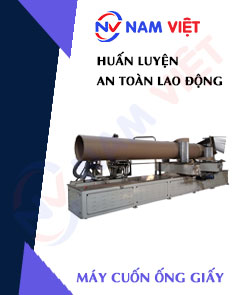
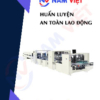
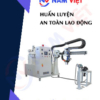



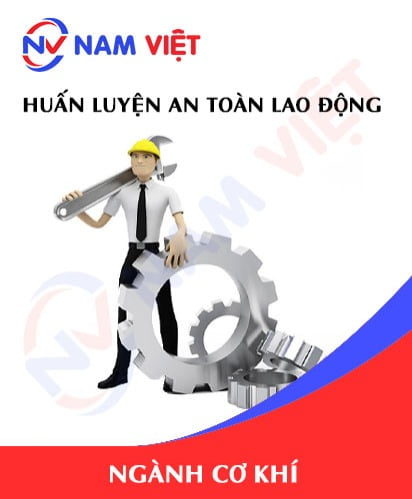
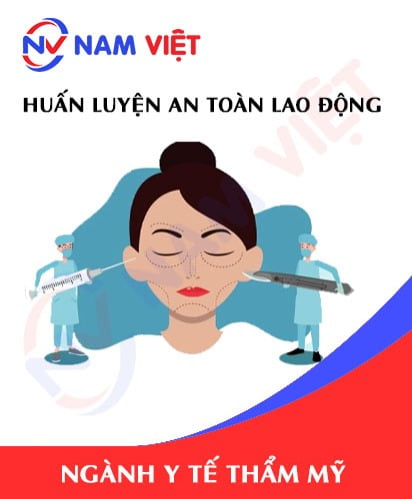
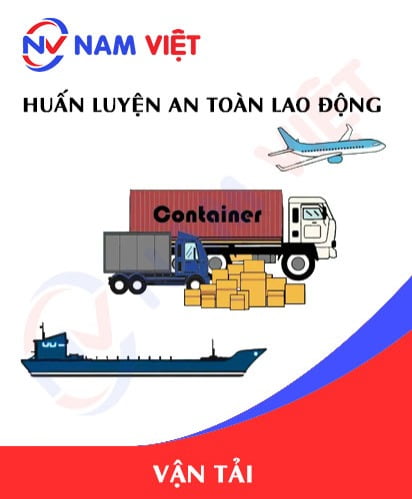
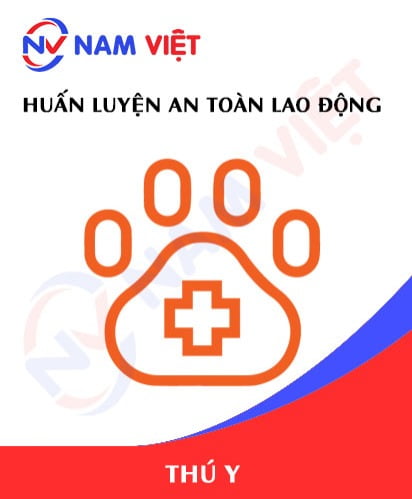
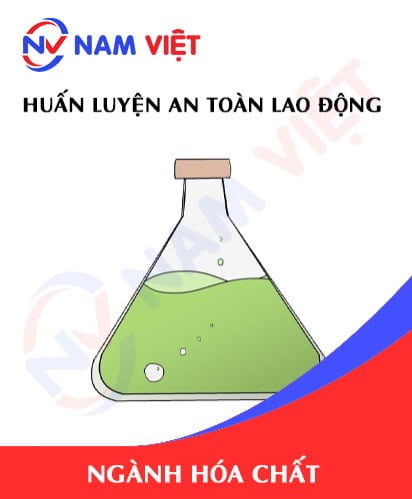
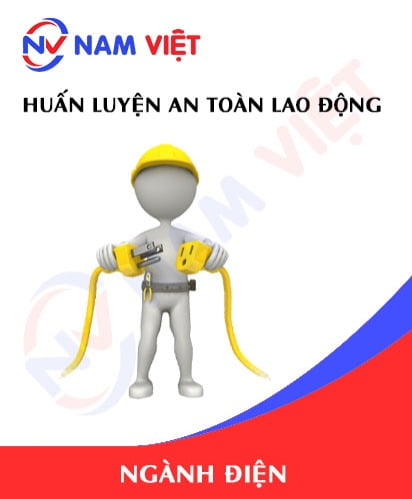
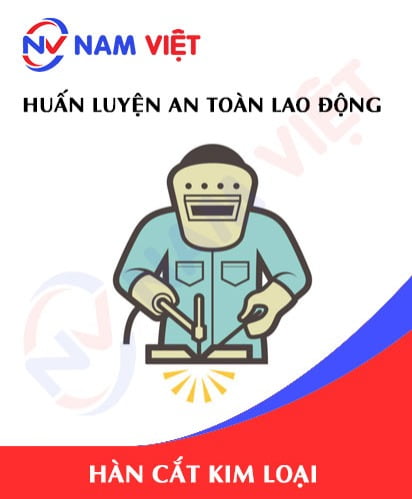
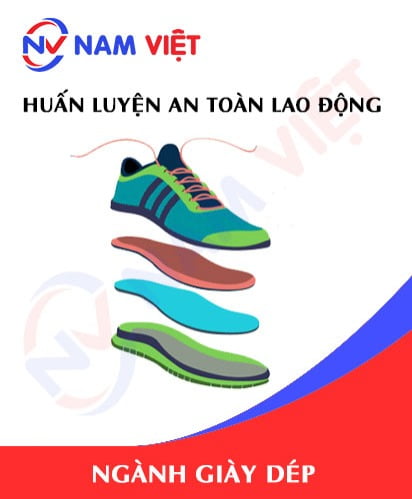
Review Occupational Safety Training for Paper Tube Winding Machine Operation
There are no reviews yet.